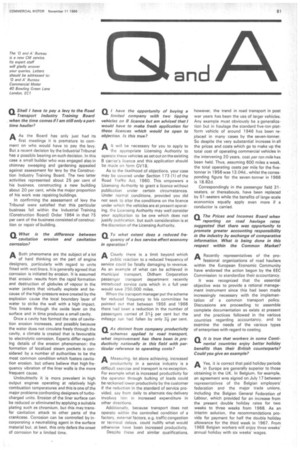Q As distinct from company productivity
Page 83

If you've noticed an error in this article please click here to report it so we can fix it.
schemes applied to road transport, what improvement has there been in productivity nationally in this field with particular reference to operating costs?
Measuring, let alone achieving, increased productivity in a service industry is a difficult exercise and transport is no exception. For example what is increased productivity for the operator through bulking of loads could be reckoned lower productivity by the customer if the reduction in the standard of service provided, say from daily to alternate day delivery involves him in increased expenditure in other directions.
Additionally, because transport does not operate within the controlled condition of a factory, external factors, e.g. traffic congestion or terminal delays, could nullify what would otherwise have been increased productivity.
Despite these and similar qualifications.
however, the trend in road transport in post war years has been the use of larger vehicles. Any example must obviously be a generalization but in haulage the standard five-ton platform vehicle of around 1946 has been replaced in many cases by the seven-tonner. So despite the very substantial increase in all the prices and costs which go to make up the total cost of operating commercial vehicles in the intervening 20 years, cost per ton mile has been held. Thus, assuming 600 miles a week, the total operating costs per mile for the fivetonner in 1956 was 13.04d., whilst the corresponding figure for the seven-tonner in 1966 is 18.82d.
Correspondingly in the passenger field 31seaters, or thereabouts, have been replaced by 51-seaters while the benefits of large-scale economics equally apply even more if a conductor is carried.
































































































































